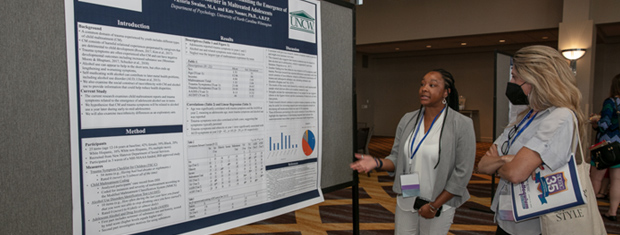




The APSAC Advisor is a peer reviewed quarterly news journal for professionals in the field of child abuse and neglect.
The APSAC Advisor provides succinct, data-based, practice-oriented articles that keep interdisciplinary professionals
informed of the latest developments in policy and practice the field of child maltreatment. It is designed to highlight
best practices in the field and publish original articles and current information about child maltreatment for professionals
from a variety of backgrounds including medicine, law, law enforcement, social work, child protective services, psychology,
public health and prevention in the U.S.
 If you wish to learn more about submitting an article to the Advisor, please click here.
If you wish to learn more about submitting an article to the Advisor, please click here.
This library contains Advisor issues dating back to the first issue in 1988. The most recent issue appears at the top.
Scroll down to select past issues by year and issue number. Once a publication appears in the box, you
can use the Enlarge button to open the document in a new window or tab (depending on how your browser is set up).
This will allow you to view the document with larger print.
To print a document, first use the Enlarge button to open the document in a new window or tab. Then use your browser's Print command.
To return here from a new tab, close the tab. To return from a new window, click your browser's Back button.
In the listing below, click on a year and issue number to see the articles in that publication.
2008 Number 2
Challenges to Evidence-Informed Practice and Policy Concerning Adolescent Sex Offenders
Any commentary prioritizing current issues is to some extent subjective. There might be different lists depending on the source. Ask a trial lawyer, and the issues may pertain to court proceedings. Ask a therapist, and the issues may pertain to therapy techniques. My own perspective is that of someone concerned with how science can inform practice and public policy.
Adolescents With Illegal Sexual Behavior: Current Knowledge
Adolescents with illegal sexual behavior (AISB) are typically defined as boys and girls from ages 13 to 18 who commit illegal sexual behavior as defined by the statutes of the jurisdiction in which the offense occurred. Often used for AISB is the label juvenile sex offender, a broader term that includes all youth under age 18 with illegal sexual behavior. To date, the term adolescent sex offender has been widely used for these adolescents in treatment programs, research projects, multidisciplinary training, and the literature in general. However, professionals who work with these adolescents have recommended that the term sex offenders not be used with youth under age 18 as it ties the adolescents too closely to the category of adult sex offenders.
There have been several attempts to define subtypes of adolescents with illegal sexual behavior (AISB), which would allow a better understanding of their supervision needs, the etiology of the behavior, case management, their responsiveness to treatment, and their level of risk for recidivism. Clinically-based typologies may be useful in planning interventions, but they should be used with caution as they have not been empirically tested. Clinical typologies are important because they can potentially guide interventions.
Adolescent Girls With Illegal Sexual Behavior
Over the past decade, illegal sexual behavior by adolescents has become a growing concern in the United States. Although most cases of illegal sexual behavior (AISB) coming to the attention of the juvenile courts involve adolescent boys, cases involving teenage girls appear to be increasing.
Multisystemic Therapy: Treatment for Adolescents With Delinquent Sexual Behavior
Multisystemic therapy (MST) (Henggeler & Borduin, 1990; Henggeler, Schoenwald, Borduin, Rowland, & Cunningham, 1998) is an evidence-based treatment model for severely delinquent youth that has been adapted for use with adolescents with illegal sexual behavior.
The purpose of Journal Highlights is to alert readers to current literature on child abuse. Selected articles from journals representing the variety of disciplines reflected in APSAC's membership are presented in the form of an annotated bibliography.
APSAC Advisor 20(2): Full Issue